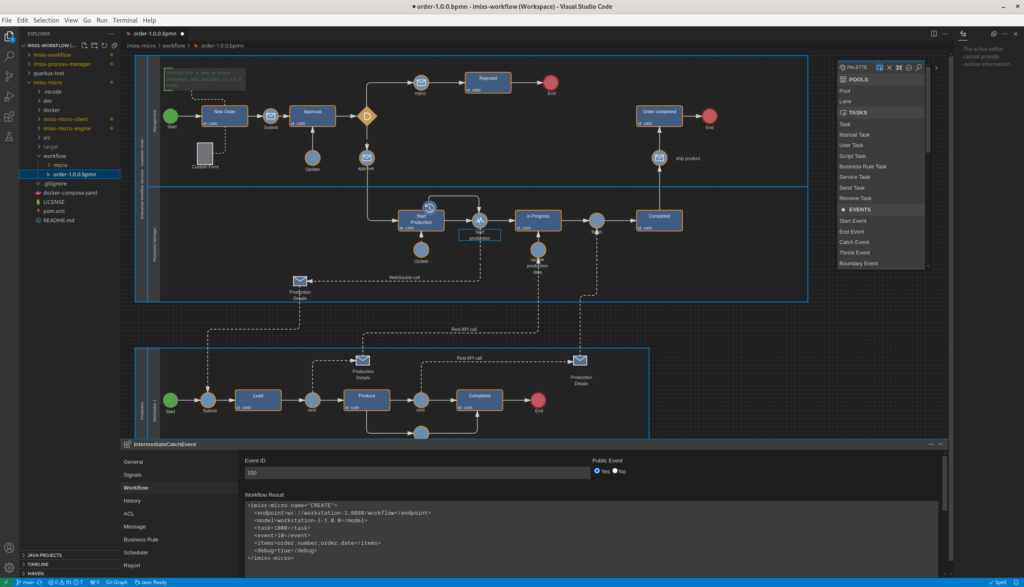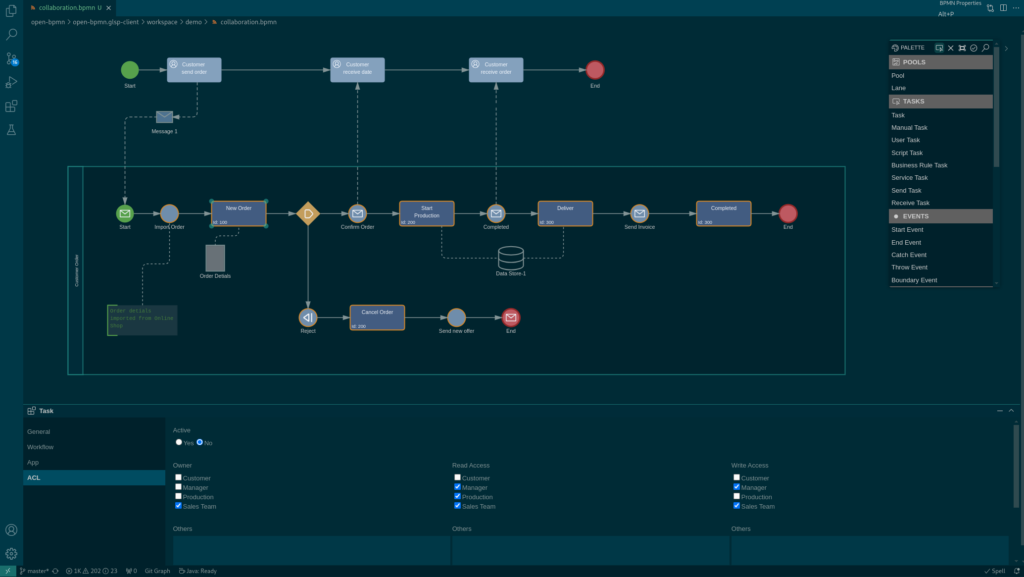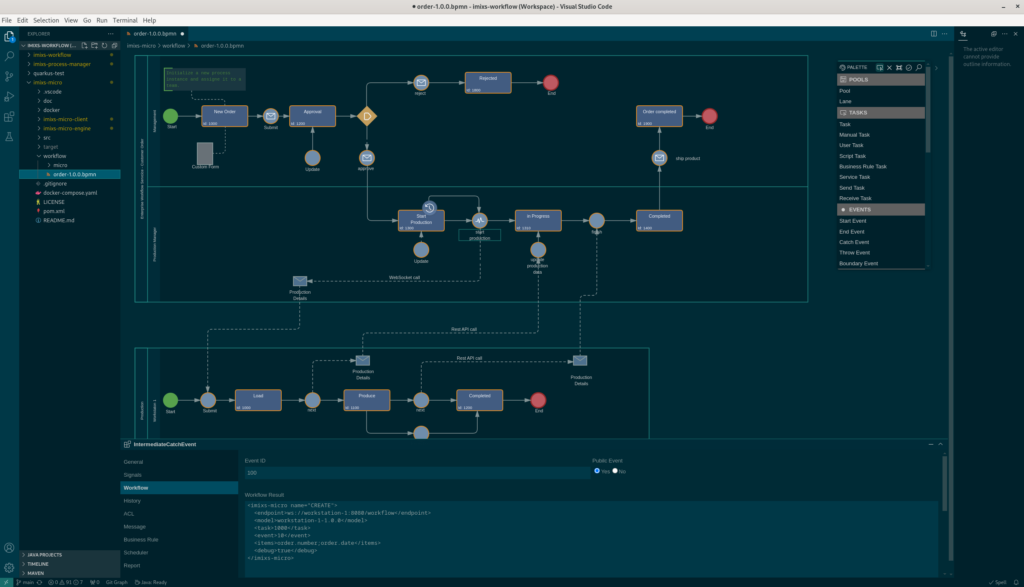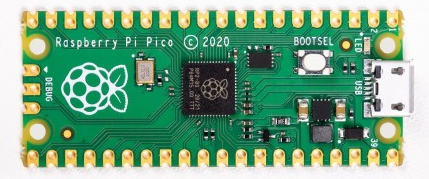We’re thrilled to announce today the release of the latest version of Open-BPMN! With this update, we’ve introduced several exciting new features and improvements that make modeling BPMN diagrams even easier and more efficient.

What’s New in This Release?
- Built on GLSP 2.3:
Open-BPMN now runs on the latest version of the Graphical Language Server Platform (GLSP) 2.3 framework. This upgrade brings better performance, stability, and a more reliable modeling experience. - New Data Objects:
We’ve added new Data Objects to the toolkit, allowing you to create even more detailed and expressive BPMN diagrams. This enhancement opens up new possibilities for modeling complex business processes. - Improved Routing:
The routing of elements in Open-BPMN has been optimized. Connecting elements is now more intuitive and faster, making your workflow smoother than ever. - VS Code Extension Update (Version 1.1.14):
Alongside the core release, we’ve also updated our VS Code Extension to version 1.1.14. This update allows you to create and edit BPMN models directly in Visual Studio Code and Microsoft Visual Studio Code – perfect for those who want to stay in their development environment. - Compatibility with Imixs-Workflow:
The new version of Open-BPMN is fully compatible with the open-source BPMN engine Imixs-Workflow. This ensures a seamless transition from modeling to executing your processes.
Why Does This Matter?
With these updates, we continue to solidify Open-BPMN as one of the leading open-source solutions for BPMN modeling. Our goal is to provide you with a tool that is not only powerful but also easy to use – and all of this for free and open-source.
Try It Out Now!
The new version of Open-BPMN and the updated VS Code Extension are now available for download. Head over to our website to get started: https://www.open-bpmn.org.
We’re excited to hear your feedback and learn how you’re using the new features. Share your experiences with us – because Open-BPMN is all about the community!
Your Open-BPMN Team



